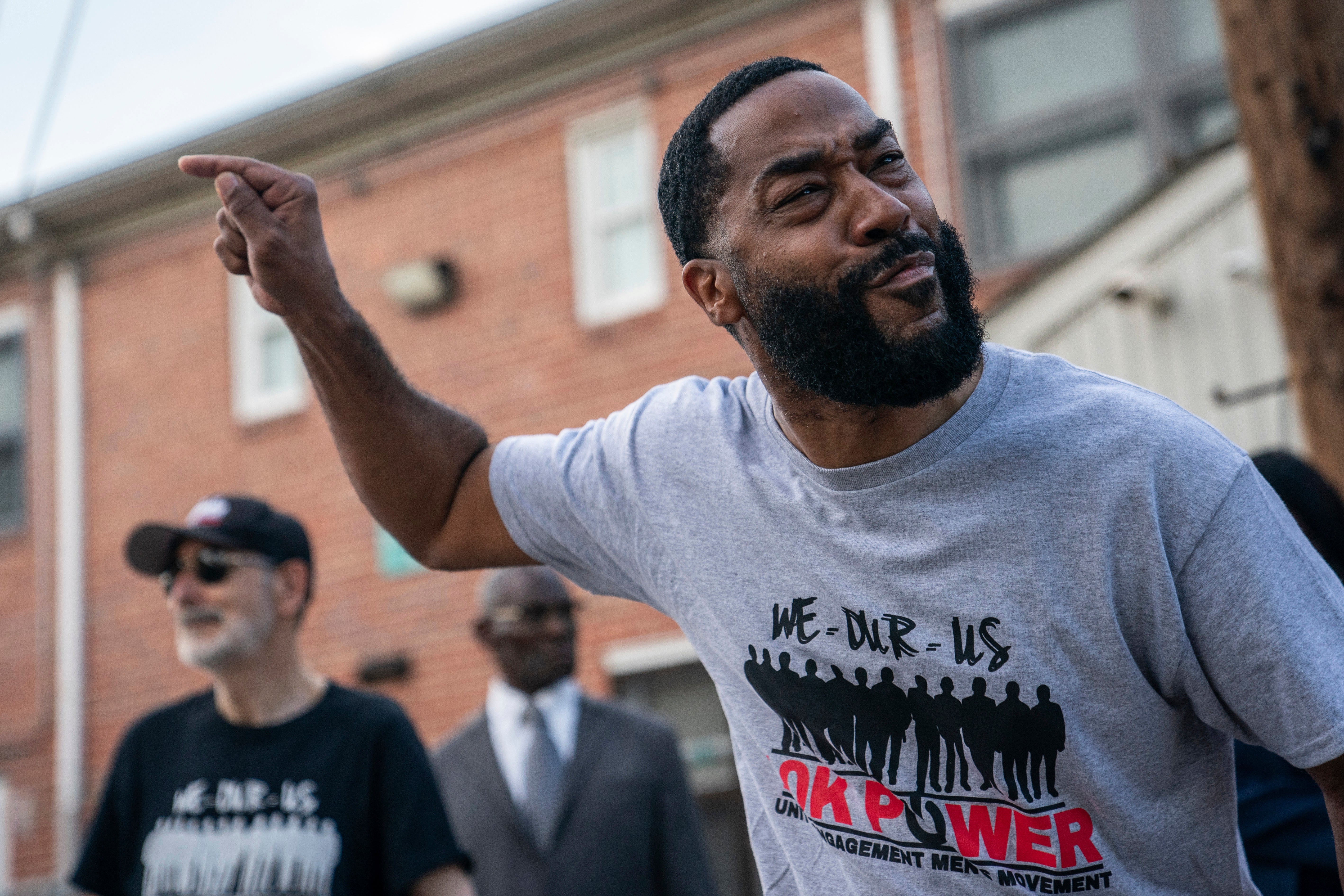The Independent's journalism is supported by our readers. When you purchase through links on our site, we may earn commission.
An epidemic of gun violence has gripped America – why have we given up trying to stop it?
At least 22 mass shootings marred the recent Independence Day celebrations – but the politics surrounding firearms in the US are the stuff of parody, writes Jonathan Metzl


In the United States we celebrated our independence in the most American way possible: by ducking for cover.
At least 22 mass shootings marred the recent long 4 July holiday weekend. Multiple victim gun homicides killed 20 people and injured scores more in states, cities, and towns across the nation. A man armed with an AR-15 style rifle and a pistol went on a shooting rampage in Philadelphia, killing and injuring victims including a 33-year-old mother and her two-year-old twins. Deadly shootings disrupted holiday gatherings in Baltimore, Louisiana, Michigan, and Texas. Someone opened fire on people lighting off celebratory fireworks in Boston. A 10-year-old and a 17-year-old were among the victims when a gunman fired from the window of an SUV in Washington, DC.
These tragedies played out one year after a gunman killed seven people and injured 48 others at an Independence Day parade in Illinois – followed by yet another year in which mass shootings continued to rise. Today in Michigan, a pre-trial hearing begins for a 17-year-old high school student who brought a semiautomatic weapon to school and killed his classmates. Gun violence has become as American as baseball, hot dogs, or apple pie.
I’ve studied US shootings for over a decade, a time period that has seen staggering shifts in our response to firearm-related trauma.
It was not all that long ago that mass shootings led to searing national self-reflection. Even politicians funded by the National Rifle Association (NRA) called for gun safety reform after a mass shooter at Sandy Hook Elementary School in Connecticut killed 20 children and six adults in 2012. Seas of protesters and survivors marched through the streets after a shooting at Marjory Stoneman Douglas High School in Parkland Florida in 2018 – states across the country then passed laws restricting access to guns. President Trump denounced his earlier divisive rhetoric about gun violence in response to widespread protests after consecutive mass shootings in El Paso, Texas, and Dayton, Ohio in 2019.
These days, however, mass shootings elicit an even more terrifying response: resignation. A sense that nothing can be done, or that things will only get worse.
How on earth did we get here?
No doubt, American feelings of helplessness about reducing gun violence result from the machinations of the NRA, a powerful gun manufacturer lobbying group whose efforts go far beyond selling guns. The NRA and its supporters fund politicians, judges, and other decision makers who in turn enact ever-more permissive laws, leading to more and more civilian-owned guns.
The system begins to feel so slanted and unfair that compromise becomes untenable. After a New York Republican congressman voiced support for an assault rifle ban following a racially charged mass shooting in a Buffalo supermarket in 2022, the blowback from gun rights supporters was so intense that only three days later he announced that he would step down from office.
A dangerous stasis then falls over our political system. Democrats decry how Republican politicians are unable or unwilling to discuss even the most basic gun reform efforts. As Beth Roth, executive director of the Safe Tennessee Project, recently put it to me, “Polling shows unprecedented support for common sense gun laws … but until we see a few pro-gun Republicans willing to compromise or who lose a primary or general election because they fail to do so, the gun lobby will continue to control our legislatures.” Liberal political commentator Danielle Moodie similarly decried how, “while a majority of Americans believe in gun safety and gun reform, the Republican Party sees more profit in their death than saving lives.”
Indeed, if they weren’t so deadly, American gun politics would seem the stuff of parody. In 2021, GOP congresswoman Marjorie Taylor Greene introduced legislation to stop the “war on gun owners” by abolishing the US Bureau of Alcohol, Tobacco and Firearms. One year later, our Supreme Court overturned a law on the books in New York City since 1913 that allowed officials to regulate who could carry loaded guns into the subway during rush hour. That court will now hear a case to determine whether the government can forbid people subject to domestic violence orders from having guns.
However, the gun lobby and the GOP are not the only barriers to gun safety reform: so too is American popular opinion. Growing numbers of Americans lose faith in the system and believe that the answer to more shootings is more civilians carrying guns.
An estimated 465 million guns have been produced for the US market – more than one gun per person in the entire nation. Evidence suggests that fear of becoming the next casualty drives new demographics of gun owners, including Black Americans, women, and self-described liberals.
America has become an armed society that shoots first and asks questions later. Tragedies lead to fear, which leads to division. Which increasingly leads to looser gun laws, more guns, and ever-more shootings.
247 years ago, of course, the US declared its independence from Great Britain. The founding documents of our nation enshrine unalienable rights to life, liberty, and the pursuit of happiness. For better or worse, those documents also support “the right of the people to keep and bear Arms.”
The meaning and the context of gun rights, vaguely detailed in the second amendment of the US constitution, have been hotly contested for much of American history. For some people, gun ownership has come to represent personal safety, autonomy, or protection from governmental tyranny; while for others, the right to unfettered gun ownership is a relic of some of the worst chapters of American history.
Our inability to bridge that divide leads to more than mass shootings: it infringes on liberties that undergird American happiness. As a mother of four from Nashville put it to me last month during a research interview, “no way I’ll let my family go to parades or block parties on 4 July … if you hear a pop, you have no idea if it’s fireworks or gunshots.”
Guns and shootings present existential questions for Americans.
How we address these questions will go a long way toward defining what it means to live and die in our country for the next 247 years.
Jonathan M Metzl is director of the Department of Medicine, Health, and Society at Vanderbilt University. His book What We’ve Become: Living and Dying in a Country of Arms will be released in January 2024






Join our commenting forum
Join thought-provoking conversations, follow other Independent readers and see their replies
Comments